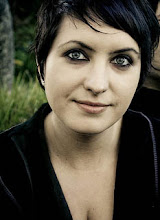Brian Little & Hunter Kennedy
The Fly on the Wall film Fokofpolisiekar: Forgive Them For They Know Not What They Do, was named Best South African Documentary at Encounters, after opening to sell-out screenings and adding an extra show to meet demand. Ster-Kinekor released the feature-length documentary at cinemas in September 2009.
Directed by Brian Little, the documentary follows the rise of the controversial Afrikaans punk band. Comprising Hunter Kennedy, Francois Van Coke, Johnny De Ridder, Wynand Myburgh, and Jaco Venter, Fokofpolisiekar transformed the local music scene and, arguably, their own generation. In the beginning, the idea of starting a punk Afrikaans band was laughable,but the band’s don’t give-a-damn attitude cemented their success and won the hearts of the Afrikaaner youth who struggled to find their own identity in post-Apartheid South Africa. Brian says, “There is incredible energy at their shows. When you look at the fan’s faces, and their reactions to the live performances you can’t help but think there must be more to it, something underlying the fanaticism.”
The director professes to be a fan of the band, although he can’t explain why. “I’m English so I had to get all the lyrics translated. For me, it’s purely intuitive.” Bryan believes the band’s lyrics were key to their success. “The lyrics really did it. For the first time someone had the courage to say what the youth were feeling and give them a voice. The lyrics are brutally honest. In many ways Fokofpolisiekar are anti-establishment, but they also very personal.”
Lyricist Hunter Kennedy liked the film, although he confesses he finds it somewhat amusing. “It’s hard to judge it objectively. We look like total tits. The film wasn’t our idea. We just thought it would be cool if we could be in a movie! It tells our story. Maybe we don’t have to do this anymore. We can just tell someone to watch the film.” he laughs.
The self-funded documentary started out as a short project but ended up taking two-and-a-half years to complete. Brian says, “We just kept on finding so many layers to the band, and so much depth.” Brian and the crew followed the band as they performed nearly 150 shows in one year. “They live a crazy Afrikaaner lifestyle. These guys sometimes pull off two shows a day, and then have a big party. They have no concept of tomorrow. It’s pretty crazy.”
At the beginning of filming Brian struck a deal with photographer Liam Lynch. “We were at Liam’s exhibition in Pretoria and I realised that no one has captured the band quite like he has. He captures the power of their live shows just brilliantly. We used his work exclusively in the film and were able to access his archive of nearly 40 000 images.”
Brian says filming was total chaos. “The live shows were filmed using 16mm Bolex in low light and we used normal HD for the interviews.” In contrast, the Kirstenbosch concert needed six cameras and cranes to get the necessary shots. Grant Appleton was the DOP. “The film was a lot more intimate than people get to see of the band. Like Liam, we chronicled everything that they had been through, and not only the high moments. This is their mad journey to be professional musicians.”
The film ends with the band taking a break, which is ironically the point where filming started. The ending leaves the future of the band in question. The band members are currently more focused on projects like van Coke Cartel, aKing and Die Heuwels Fantasties, but since the documentary’s release at Encounters, Fokofpolisekar has played in Cape Town and Pretoria, as well at the Oppikoppi festival, dispelling rumours that it’s disbanding. One thing is certain, young South Africans have taken to Fokofpolisiekar like sticky gum to the back of an All Star shoe.
The documentary had an impressive start at Encounters. Brian says, “We knew we had an audience for this film and that we had to live up to that. All our four screenings were sold out even before Encounters opened. I think people got a lot more than what they expected to see.” Fokofpolisiekar, Forgive Them For They Know Not What They Do has garnered a lot of international interest and will be screened at the next Sundance Film Festival and at the International Documentary Festival Amsterdam (IDFA).
Fly on The Wall is a South African film making collective founded in 2004. The company started out by making music videos and short films before capturing the attention of MTV International.
Sally Fink
This article first appeared in The Callsheet.













